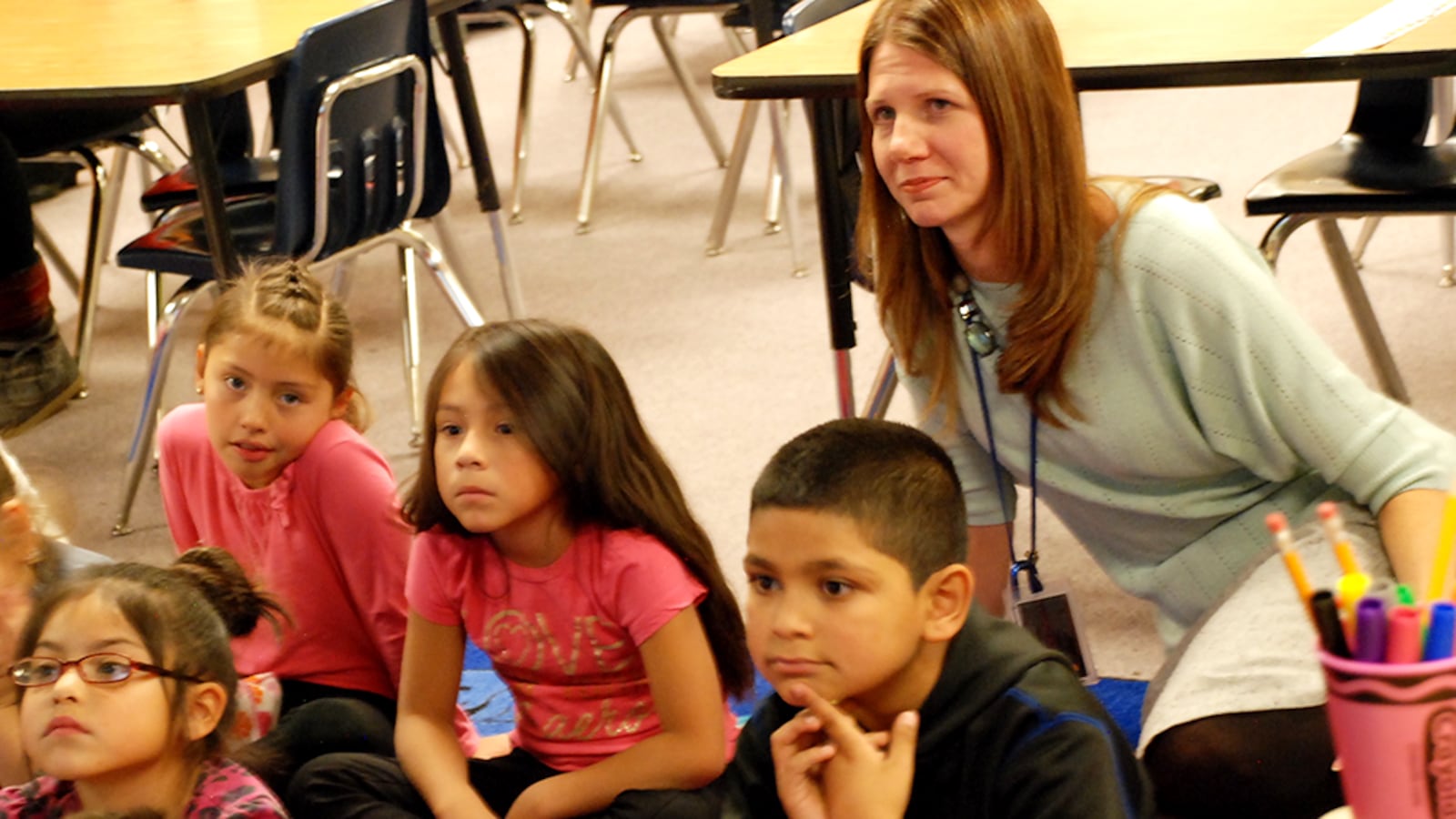When Aurora Public Schools went looking for ways to save money earlier this year, one casualty was a district-wide contract for a service that provides a translator on the phone when one is not available in person.
The decision could have hurt Crawford Elementary School, where students speak about 35 languages and the service is used at least weekly— more at the start of the school year.
But Principal Jenny Passchier was not without options. As one of five schools that comprise Aurora Public Schools’ year-old innovation zone, Crawford has greater autonomy from district rules and budgeting decisions.
So when school resumed a couple of weeks ago, families at the five innovation zone schools got phone calls they could understand because leaders of the schools chose to keep paying for the translation and drop other district services to make up the difference.
“It’s very critical that we have some way to get ahold of our families,” Passchier said. “Especially in maybe more informal situations. We don’t always have translators that are readily available in person, so that was a critical piece that we needed to keep.”
That decision provides a window into what autonomy looks like in Aurora’s innovation zone, Superintendent Rico Munn’s biggest reform bet to date to lift achievement in a district with a challenging student population and poor academic track record.
With the innovation zone, Aurora officials are turning to a school model that other districts across the state and country have tried, with mixed results. Innovation status provides schools charter school-like autonomy, but the schools are operated by the district instead of independently.
The five schools in northwest Aurora started rolling out their innovation plans last school year.
Taking advantage of the state’s innovation law, APS officials created the zone to give schools greater flexibility from some state laws, union or district policies so principals could govern things like curriculum, hiring practices, school calendars and budgets in ways that might improve achievement at their schools.
Last year, in the first year of innovation status, district officials worked with principals of the five schools in the zone to figure out what district services they could do without, and what extra services they wanted to pay for with the money they might have instead.
Principals started by looking at what their school needed help with and then district officials worked with them to analyze how well the existing services worked.
In the case of the TeleLanguage service, district officials calculated that the average district school used the translation service for about 909 minutes, or about 15 hours, per school year. But each of the five schools in the innovation zone used the service for about 2,978 minutes per school year — about three times as often as the average district school.
After the analysis, the five schools decided to drop several services, including some from the district’s human resources department, and in exchange the schools were given about $500,000 extra in the 2017-18 budget.
“I led all five principals through the process of evaluating the needs of their schools,” said Lamont Browne, executive director of autonomous schools, including the innovation zone. “My approach was very much facilitating what ideas they had for who they were.”
As a zone, the five schools created three new positions with the extra $500,000. The schools hired a student engagement advocate to help communicate with families and improve student attendance (a position that would no longer exist at the district level); a director of instruction and leadership development; and a director of talent and acquisition to pick up some of the district HR department’s traditional duties.
The woman hired for that last role already has helped the five schools fill positions that still were open as school started.
Passchier described the budget redesign process as collaborative and said she spent a lot of time reflecting on her school’s needs.
“We were able to identify what are the zone-wide themes that we can support, but also what are unique things we need at the school level,” Browne said.
Each school made ia case for its own funding needs. For instance, Aurora Central High School hired an additional student engagement advocate that would be dedicated just to the 2,000-student high school. One of the staff person’s primary responsibilities: helping improve poor attendance.
Passchier said Crawford staff wanted to continue some reading work they’d done with a grant that was ending. The school is now using about $5,000 to continue work with a consultant the school found helpful in teaching students to read.
Officials say it’s too early to know how well the redesigned budget is working for the schools, but Passchier said she’s already seeing benefits two weeks into the school year.
The director of student engagement, who will work with the five schools to help them engage families and students with a goal of increasing attendance, already has been at Crawford several times, Passchier said.
Browne said that if principals find other district services they want to reconsider or analyze as the school year unfolds, the budget for the five schools may change.
Correction: This post has been updated to reflect that the innovation schools dropped use of just some of the services from the district’s human resources department.

